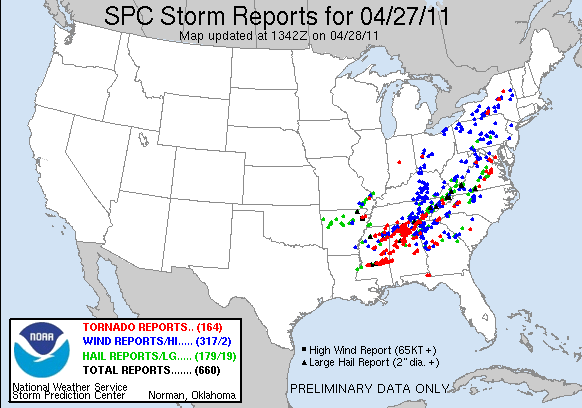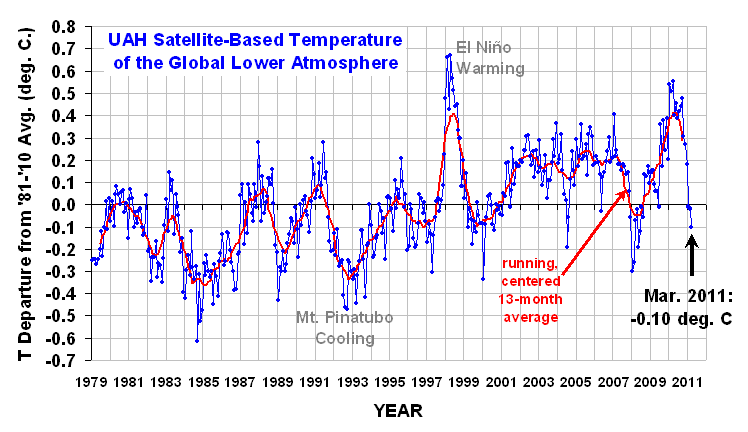I see the inevitable blame-humanity game has been reinvigorated by the recent tornado swarm. I have not read other meteorologists’ treatment of this issue, so what follows can be considered an independent opinion on the matter.
If there is one weather phenomenon global warming theory does NOT predict more of, it would be severe thunderstorms and tornadoes.
Tornadic thunderstorms do not require tropical-type warmth. In fact, tornadoes are almost unheard of in the tropics, despite frequent thunderstorm activity.
Instead, tornadoes require strong wind shear (wind speed and direction changing rapidly with height in the lower atmosphere), the kind which develops when cold and warm air masses “collide”. Of course, other elements must be present, such as an unstable airmass and sufficient low-level humidity, but wind shear is the key. Strong warm advection (warm air riding up and over the cooler air mass, which is also what causes the strong wind shear) in advance of a low pressure area riding along the boundary between the two air masses is where these storms form.
But contrasting air mass temperatures is the key. Active tornado seasons in the U.S. are almost always due to unusually COOL air persisting over the Midwest and Ohio Valley longer than it normally does as we transition into spring.
For example, the poster child for active tornado seasons was the Superoutbreak of 1974, which was during globally cool conditions. This year, we are seeing much cooler than normal conditions through the corn belt, even delaying the planting schedule. Cool La Nina years seem to favor more tornadoes, and we are now coming out of a persistent La Nina. The global-average temperature has plummeted by about 1 deg. F in just one year.
An unusually warm Gulf of Mexico of 1 or 2 degrees right now cannot explain the increase in contrast between warm and cold air masses which is key for tornado formation because that slight warmth cannot compete with the 10 to 20 degree below-normal air in the Midwest and Ohio Valley which has not wanted to give way to spring yet.
The “extra moisture” from the Gulf is not that important, because it’s almost always available this time of year…it’s the wind shear that caused this outbreak.
More tornadoes due to “global warming”, if such a thing happened, would be more tornadoes in Canada, where they don’t usually occur. NOT in Alabama.
It is well known that strong to violent tornado activity in the U.S. has decreased markedly since statistics began in the 1950s, which has also been a period of average warming. So, if anything, global warming causes FEWER tornado outbreaks…not more. In other words, more violent tornadoes would, if anything, be a sign of “global cooling”, not “global warming”.
Anyone who claims more tornadoes are caused by global warming is either misinformed, pandering, or delusional.

 Home/Blog
Home/Blog






